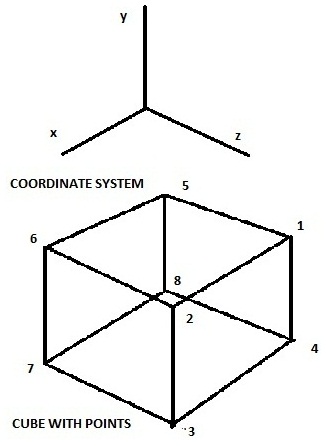Z Rotation Cubing
CFOP Method Algorithms: QiYi Valk 3: http. 4 Z=2 acts on a cube. S 4 acts on it by rotational symmetries. Z=2 and Z=3 are naturally subgroups of Z=6, and so they act on a regular hexagon by rotations. What is this action? The group R acts on the line R by translation, i.e. For g 2R and v 2R, g:v:= g + v, the addition of numbers. The group R acts on the circle S1 = fz 2C jjzj= 1gby x:z.
The rotate3d()CSSfunction defines a transformation that rotates an element around a fixed axis in 3D space, without deforming it. Its result is a <transform-function> data type.
Z Rotation Cubing
I made all the different corners (I calculated them by getting the center X/Y/Z of the cube, and the radius, and adding or subtracting the radius to the center X/Y/Z based on what corner of the cube I wanted), and I followed the lesson to the best of my ability (it is in JavaScript, while I am using C# /w SFML). So, a newly created cube uses its x, y, and z axis set to zero rotation. Rotating the cube updates the rotation axes. If you de-select and the re-select the cube, the axes are shown in the same orientation as before. A cube not rotated in Local Gizmo Toggle A cube rotated in. LocalRotation and Rotation.
The source for this interactive example is stored in a GitHub repository. If you'd like to contribute to the interactive examples project, please clone https://github.com/mdn/interactive-examples and send us a pull request.
In 3D space, rotations have three degrees of liberty, which together describe a single axis of rotation. The axis of rotation is defined by an [x, y, z] vector and pass by the origin (as defined by the transform-origin property). If, as specified, the vector is not normalized (i.e., if the sum of the square of its three coordinates is not 1), the user agent will normalize it internally. A non-normalizable vector, such as the null vector, [0, 0, 0], will cause the rotation to be ignored, but without invaliding the whole CSS property.
Syntax
The amount of rotation created by rotate3d() is specified by three <number>s and one <angle>. The <number>s represent the x-, y-, and z-coordinates of the vector denoting the axis of rotation. The <angle> represents the angle of rotation; if positive, the movement will be clockwise; if negative, it will be counter-clockwise.
Z Rotation Cubing
Values
x- Is a
<number>describing the x-coordinate of the vector denoting the axis of rotation which could between 0 and 1. y- Is a
<number>describing the y-coordinate of the vector denoting the axis of rotation which could between 0 and 1. z- Is a
<number>describing the z-coordinate of the vector denoting the axis of rotation which could between 0 and 1. a- Is an
<angle>representing the angle of the rotation. A positive angle denotes a clockwise rotation, a negative angle a counter-clockwise one.
| Cartesian coordinates on ℝ2 | This transformation applies to the 3D space and can't be represented on the plane. |
|---|---|
| Homogeneous coordinates on ℝℙ2 | |
| Cartesian coordinates on ℝ3 | |
| Homogeneous coordinates on ℝℙ3 |
Examples
Rotating on the y-axis
HTML
CSS
Result

Rotating on a custom axis
Specifications
| Specification | Status | Comment |
|---|---|---|
| CSS Transforms Level 2 The definition of 'rotate3d()' in that specification. | Editor's Draft | Initial definition |
Browser compatibility
BCD tables only load in the browser